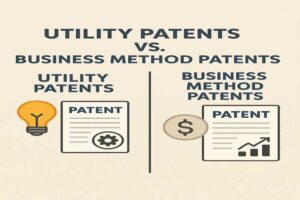I. A Strategic Masterstroke in Equity Financing
In the ever-evolving sphere of financial markets, every so often, there emerges a pioneering concept that disrupts traditional thinking and revolutionizes the art of deal-making. One such avant-garde notion is that of “Controlled Failure” – a brainchild of mine.
This strategy daringly veers off the beaten path of conventional equity financing by intentionally overvaluing the company’s equity during investment negotiations.
By doing so, it opens the door to an orchestrated downward negotiation, culminating in a valuation that surpasses the issuer’s original expectations.
It’s a bold and sophisticated strategy that, when executed well, can potentially alter the balance of power in the issuer-investor relationship.
II. The Concept of "Controlled Failure"
At its core, the concept of “Controlled Failure” manipulates the psychology of investor-issuer negotiations. It commences with the issuer setting an intentionally inflated valuation for the company’s equity.
As per the standard norms of financial markets, a stark overvaluation is often met with a degree of skepticism and resistance. Herein lies the very crux of the concept.
This overvaluation is not intended to hold, but to incite a negotiation process, coaxing the investor to counter with a lower valuation.
Yet, this new valuation, albeit lower than the initial overvaluation, is still higher than what the issuer initially aimed for. In essence, the issuer uses the investors’ negotiation process to their advantage.
III. The Psychological Underpinnings
Understanding the psychological maneuvering involved in “Controlled Failure” provides insight into its strategic brilliance. Traditional negotiation theories suggest that the anchoring effect heavily influences the outcome of a negotiation. The first figure that enters the discussion invariably serves as the anchor around which subsequent negotiations revolve. By setting a higher initial valuation, issuers can subtly shift the negotiation parameters in their favor. This strategy often results in a final valuation that exceeds the originally desired valuation.
Furthermore, the concept capitalizes on the innate human tendency to feel victorious when they have successfully negotiated down from an initially high price. Thus, the investor leaves the negotiation believing they have achieved a successful outcome, despite agreeing to a valuation that the issuer intended.
IV. Challenges of the "Controlled Failure"
However, the path of “Controlled Failure” is not strewn with roses. There are potential pitfalls that issuers need to avoid to prevent this strategy from backfiring.
An egregious overvaluation can raise red flags, leading investors to question the issuer’s credibility and potentially disengaging from the investment opportunity altogether.
The challenge, therefore, lies in choosing an initial valuation that is high enough to anchor the subsequent negotiation, but not so high as to deter potential investors.
To traverse this delicate line, issuers need to wield a keen understanding of the current market dynamics and investor sentiment. A well-researched and well-thought-out valuation, backed by a solid rationale, can lend credibility to the initial high asking price, reducing the risk of alienating potential investors.
V. The Importance of Execution
It’s also important to underscore that the successful implementation of the “Controlled Failure” strategy requires deft handling of negotiations. The issuer must convincingly defend the initial high valuation while subtly guiding the conversation towards a desirable middle ground. Furthermore, the issuer must also manage the narrative effectively, keeping investor confidence intact throughout the negotiation process.
VI. The Power and Limitations of "Controlled Failure"
When executed skillfully, the concept of “Controlled Failure” has the potential to turn traditional equity financing on its head. It offers a novel way for issuers to attract investment at a valuation exceeding their initial target, flipping the script of conventional financing methods.
By encouraging negotiation and leveraging psychological anchors, issuers can maximize their financial gains while creating a win-win perception.
However, “Controlled Failure” is not a one-size-fits-all solution. While it opens up new vistas in financing strategies, it also necessitates a careful understanding of the investing climate, in-depth research, and strategic negotiation skills.
Different markets and investors react differently, and what might be seen as a clever maneuver in one situation could be perceived as a lack of credibility in another.
VII. Case Study Analysis
For an in-depth understanding, let’s consider an illustrative case. Imagine a tech startup aiming for a valuation of $50 million in its Series A funding round.
Under the strategy of “Controlled Failure,” the startup might initially propose a valuation of $70 million.
Investors, naturally, might balk at this and counter with a $40 million valuation. The startup then negotiates from their high anchor, ultimately landing a final valuation of $55 million — a figure above their original target.
In this case, not only did the startup achieve a higher valuation than initially intended, but the investors also walk away feeling they made a savvy negotiation by bringing down the valuation from the original ask of $70 million.
VIII. Conclusion
The innovative strategy of “Échec contrôlé” spotlights the evolving nature of financial markets and underscores the importance of creative thinking in the complex world of equity financing.
While it presents substantial risks and demands nuanced execution, when employed effectively, this concept can offer impressive results.
The introduction of the concept of “Controlled Failure” illustrates the constant evolution of financial strategy. It challenges traditional thinking, while at the same time revealing the fundamental human psychology that underlies investor behavior. In the hands of a savvy financier, this approach could be a powerful tool for achieving desirable results in financial negotiations.
In conclusion, the concept of “Controlled Failure” offers a fresh perspective on equity financing. It invites issuers to embrace a contrarian approach and transform perceived failure into a strategic advantage.
The true measure of its success, however, lies in its application – understanding when to use it and how to use it effectively.
It requires not just a grasp of financial mechanics but a mastery of the art of negotiation and the psychology of decision-making.
As such, “Controlled Failure” is a testament to the endless ingenuity that drives the world of finance.







